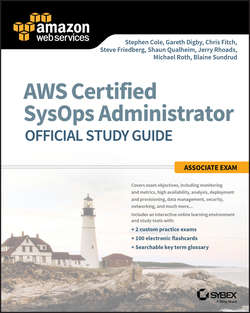Читать книгу AWS Certified SysOps Administrator Official Study Guide - Cole Stephen - Страница 6
На сайте Литреса книга снята с продажи.
Foreword
ОглавлениеI entered college in 1978, and I immediately found a second home at the computer lab on campus. This lab was home to an IBM mainframe and a roomful of noisy keypunch machines. I punched my code onto a stack of cards, and I handed the stack to a system operator. The operator loaded the cards into the reader, and my job was queued for processing. If things went well and the mainframe was not too busy, I would have my cards and my output back within four hours or so. The operator managed the work queue for the mainframe, adjusting the balance of jobs and priorities, looking for hot spots and slowdowns, and keeping the monolithic mainframe as busy and as productive as possible at all times.
As a young, curious student, I always wondered what was happening behind the scenes. As a young, impoverished student, in the days before the Internet, information was not always easy to come by. I found a rack of manuals in the lab, figured out how to order others for free, and even scavenged the trash cans for operating system “builds” to study. That thirst for knowledge, with a focus on understanding how things work at the most fundamental level, has worked really well for me over the intervening four decades.
A little over a decade ago, I wrote blog posts to announce the launches of Amazon Simple Storage Service (Amazon S3) and Amazon Elastic Compute Cloud (Amazon EC2). Those early launches set the tone for what was to come, introducing services that emerged with a minimal feature set that would be enhanced over time in response to customer feedback. At that time, aspiring AWS developers and architects did not need to make very many choices when they set out to build an AWS-powered system. There was one instance type, a couple of Availability Zones in a single Region, and simple access via the AWS CLI and the API.
Back in my mainframe days, operations was a hands-on affair. There was little in the way of tooling or automation; the operator was expected to watch the console, check on status, and to deal with issues as they arose. Today, many routine operations are handled automatically. Fault tolerance, automatic scaling, load balancing, and other high-level facilities take on many chores that were once described in detailed run books. With this change, systems operations comes into play much earlier in the system-building process, with the goal of setting up the system for success and high availability. At the same time, the operations role now spans a wider range of tasks and technologies including networking, security, and optimization. With pay-as-you-go services now the norm, people who once focused on technology can now add business skills to their repertoire.
If you are about to read this book, I am sure that you know that AWS is far more complex than it was a decade ago. On the Amazon EC2 side alone, there are now dozens of instance types, multiple types of Amazon Elastic Block Storage (Amazon EBS) volumes, and far more moving parts. There are now close to 100 services, each of which can be a valuable addition to your toolbox. The vocabulary itself has changed, with new terms such as containers, microservices, serverless computing, infrastructure as code, and so forth now commonplace.
You now face many choices when you set out to design and implement a new system. This book is designed to provide you with detailed information on many aspects of AWS, coupled with the practical knowledge needed to put your new knowledge to use and to earn your AWS certification. Within its chapters, you will find service overviews, sample scenarios, test-taking tips, and exercises. After setting up your AWS tools, you will learn about security, compute services, storage services, networking, databases, and more. Towards the end of the book, you will wrap up by learning about monitoring, metrics, and high availability. As you will soon see, the authors have packed it with the insights that they have gained while putting AWS to use in a wide variety of customer environments. There are no better teachers than those who have actually put their theory into practice.
You can choose to study the chapters individually, or you can digest the entire book as-written. Either way, I know that you will be well-prepared to build great systems and to pass your certification exams. I strongly encourage you to get hands-on experience with each service by working through the scenarios and the exercises.
I believe in the principle of life-long learning, especially when it comes to technology. The half-life of knowledge is shorter than ever before, and keeping up is far better than catching up. So dive deep and keep on learning!
– Jeff Barr, Chief Evangelist, AWS
